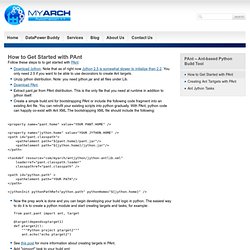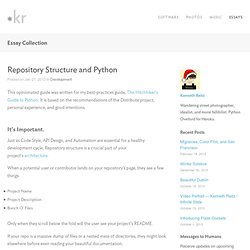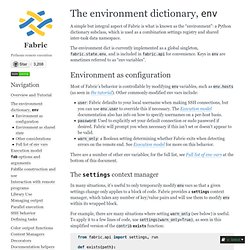

Django REST framework - APIs made easy. Python Multithreaded Programming. Running several threads is similar to running several different programs concurrently, but with the following benefits − Multiple threads within a process share the same data space with the main thread and can therefore share information or communicate with each other more easily than if they were separate processes.Threads sometimes called light-weight processes and they do not require much memory overhead; they care cheaper than processes.

A thread has a beginning, an execution sequence, and a conclusion. It has an instruction pointer that keeps track of where within its context it is currently running. It can be pre-empted (interrupted)It can temporarily be put on hold (also known as sleeping) while other threads are running - this is called yielding. Starting a New Thread To spawn another thread, you need to call following method available in thread module: thread.start_new_thread ( function, args[, kwargs] ) Example #! When the above code is executed, it produces the following result − #!
#! How to Get Started with PAnt. Follow these steps to to get started with PAnt: Download Jython.

Note that as of right now Jython 2.5 is somewhat slower to initialize than 2.2. You only need 2.5 if you want to be able to use decorators to create Ant targets. Unzip jython distribution. Note: you need jython.jar and all files under Lib. Download PAnt. Now the prep work is done and you can begin developing your build logic in python. That's it, the rest of it is simply writing your build logic in python using Ant tasks as documented here. Repository Structure and Python. This opinionated guide was written for my best-practices guide, The Hitchhiker’s Guide to Python.

It is based on the recommendations of the Distribute project, personal experience, and good intentions. It’s Important. Just as Code Style, API Design, and Automation are essential for a healthy development cycle, Repository structure is a crucial part of your project’s architecture. When a potential user or contributor lands on your repository’s page, they see a few things: Project NameProject DescriptionBunch O’ Files Only when they scroll below the fold will the user see your project’s README. If your repo is a massive dump of files or a nested mess of directories, they might look elsewhere before even reading your beautiful documentation.
Dress for the job you want, not the job you have. Of course, first impressions aren’t everything. Sample Repository. Twisted를 이용한 네트워크 서버 개발 (한국 developerWorks 로컬 콘텐츠) PyPy. The environment dictionary, env — Fabric 1.5.1 documentation. A simple but integral aspect of Fabric is what is known as the “environment”: a Python dictionary subclass, which is used as a combination settings registry and shared inter-task data namespace.

The environment dict is currently implemented as a global singleton, fabric.state.env, and is included in fabric.api for convenience. Keys in env are sometimes referred to as “env variables”. Below is a list of all predefined (or defined by Fabric itself during execution) environment variables. While many of them may be manipulated directly, it’s often best to use context_managers, either generally via settings or via specific context managers such as cd. Note that many of these may be set via fab‘s command-line switches – see fab options and arguments for details. Abort_exception Default: None Fabric normally handles aborting by printing an error message to stderr and calling sys.exit(1). Abort_on_prompts Default: False all_hosts Default: [] always_use_pty Default: True colorize_errors Default False cwd key. Django at a glance. Because Django was developed in a fast-paced newsroom environment, it was designed to make common Web-development tasks fast and easy.

Here’s an informal overview of how to write a database-driven Web app with Django. The goal of this document is to give you enough technical specifics to understand how Django works, but this isn’t intended to be a tutorial or reference – but we’ve got both! When you’re ready to start a project, you can start with the tutorial or dive right into more detailed documentation. Design your model Although you can use Django without a database, it comes with an object-relational mapper in which you describe your database layout in Python code. The data-model syntax offers many rich ways of representing your models – so far, it’s been solving two years’ worth of database-schema problems. Install it Next, run the Django command-line utility to create the database tables automatically: Enjoy the free API Design your URLs Write your views. 왕초보를 위한 Python 2.7.